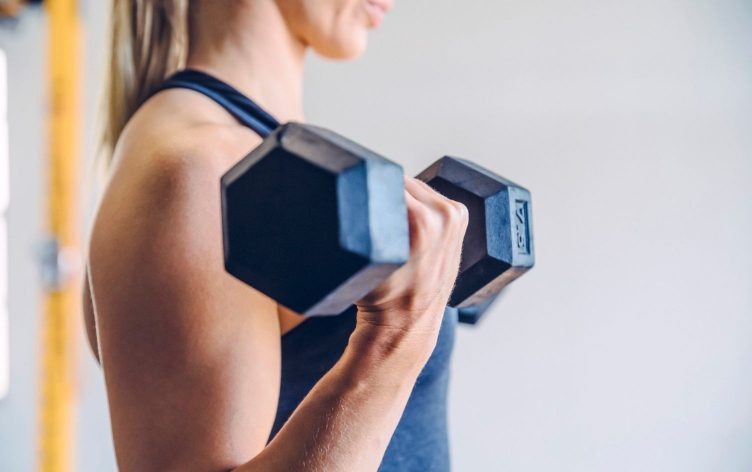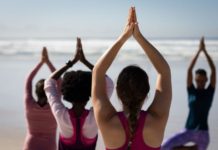
How Working Out Supports Your Immune System
Given the current world climate, boosting the immune system is top-of-mind for many people. The truth is, immunity depends on many factors. Some you have control over, and others you don’t. But exercise does play a role in immunity, so it’s worth understanding how your workout efforts could be impacting your ability to fight infection. Here, experts explain when working out helps and when it hurts, plus how to safely exercise if immunity is a concern.
HOW EXERCISE HELPS YOUR IMMUNE SYSTEM
“Exercise, both cardiovascular as well as resistance training, helps to strengthen the immune system and counter the effects of immunosenescence, the gradual deterioration of the immune system,” explains Tom Holland, an exercise physiologist, sports nutritionist and author of “The Micro Workout Plan.”
But how does that work, exactly? In the long-term, exercise mobilizes T cells, a type of white blood cell that helps protect the body against infection, Holland explains. “This holds true for both moderate- and high-intensity cardiovascular exercise,” he adds.
Evidence also suggests that obesity can cause immunosuppression and increased susceptibility to illness, says Aaron Brown, a certified personal trainer and research associate at Ultimate Performance. But research has shown regular bouts of exercise can help reverse some of these effects, even without weight loss. So it’s likely everyone’s immune system can benefit from some exercise, regardless of their weight.
While exercise-induced positive changes have been observed on a cellular level, there’s also strong epidemiological evidence, or evidence that’s been observed at a population level, that exercise is a good thing for our immune systems.
“As humans, our disease susceptibility follows a J-shaped curve,” explains Todd Buckingham, Ph.D., an exercise physiologist at Mary Free Bed Sports Rehabilitation Performance Lab. This means people who don’t have any physical activity (or very little) have a moderate risk of developing an upper respiratory tract infection, which is how you’d categorize COVID-19. People with moderate levels of physical activity have a low risk of developing an upper respiratory tract infection, about 40% less than those with low/no activity, Buckingham explains.
IN SOME CASES, EXERCISE MIGHT HURT
The end of the J-curve described above concerns those with “exhaustive” levels of physical activity. For those people, the risk of upper respiratory tract infection is high — about 50% greater than those with low levels of physical activity, Buckingham says. “Because COVID-19 is a respiratory disease, this is particularly important for athletes (and non-athletes) to pay attention to right now.”
Holland agrees, noting that true high-intensity and especially long-duration cardio — what marathoners and Ironman triathletes engage in while training — can have a detrimental effect on the immune system. “These athletes often have a mild cold or sore throat during their taper, and this is often attributed to the extended workouts and volume of training,” he adds.
This might be in part due to something known as the hormesis effect. “Hormesis theory suggests that there is an appropriate dose of stress our physiology actually adapts to in the mid- to long-term to protect us from future bouts of stress,” Brown explains. “Too little stress and we won’t adapt and progress from exercise; too much stress from training and we can end up not recovering, injured, in pain and even seeing our performance suffer.” So there’s a range of “just enough” exercise, and we don’t want to go too far over or under it.
There’s also some evidence that individual sessions of intense exercise suppress the immune system, Brown says. “The secretion of immune cells, known as lymphocytes, is down-regulated, and other hormones and protein messengers in our body are seemingly negatively impacted.” In the ‘80s and ‘90s, it was thought this temporary suppression of the immune system created a window of opportunity for an increase in susceptibility to illness, he says.
Newer research indicates that this may not be the case, though. Instead of the lymphocytes being downregulated, it may just be that they’ve moved locations, for example, to the lungs in anticipation and preparation to “do battle” in the face of an infection, notes Tracey Evans, PhD, a science writer and medical researcher. But this research is emerging, so it’s hard to confidently make recommendations based on it.
In any case, it’s unlikely exercising too intensely is something most people need to worry about. Even with the popularity of at-home HIIT programs, the overwhelming majority of people do not truly exercise at these higher intensities, Holland explains. “That being said, for those who do push their cardiovascular workouts into the anaerobic ‘red zone,’ it’s better to hold back for a few weeks while continuing to exercise in these unique times.”
HOW TO EXERCISE IF YOU’RE CONCERNED ABOUT IMMUNITY
If you don’t exercise, now is a great time to start.
“With many state governments enacting a stay-at-home order, this gives us an opportunity to spend more time exercising,” Buckingham says. “Don’t worry that the gyms, pools and fitness centers are closed. Just take a look around you and anything can be used for exercise.”
If you already exercise, take it easy.
“This is the time to err on the side of caution,” Holland says. When in doubt, he advises going easier and focusing on cardiovascular endurance — but not to excess. LISS workouts are a great option, he adds.
If you were strenuously training, back off the intensity.
Buckingham agrees, noting that if you’re a regular exerciser who pushes the limits on a daily basis, now is the time to back off your training. “With all races and events through May (and potentially further) being postponed or canceled, there is no need to be doing extremely hard training and digging your immune system into a hole right now. Continue your exercise routine, but decrease the intensity,” he advises.
THE BOTTOM LINE
“You’ll get the most benefit by exercising 3–5 days per week for 30–60 minutes per day, while keeping your heart rate less than 75% of your maximum (use 220 minus your age to approximate your maximum heart rate if you don’t know what it is),” Buckingham says. “This way, you’re doing enough to improve your immune function and decrease your risk of infection without doing too much and putting yourself at an increased risk.”
If you feel like you’re fighting something, the safest route, Evans says, is to sit out your workouts: “This would be more damaging than beneficial and can have serious consequences.”
Check out our Support Your Immune System Plan to get day-by-day guidance on how to stay as healthy as you can be.





